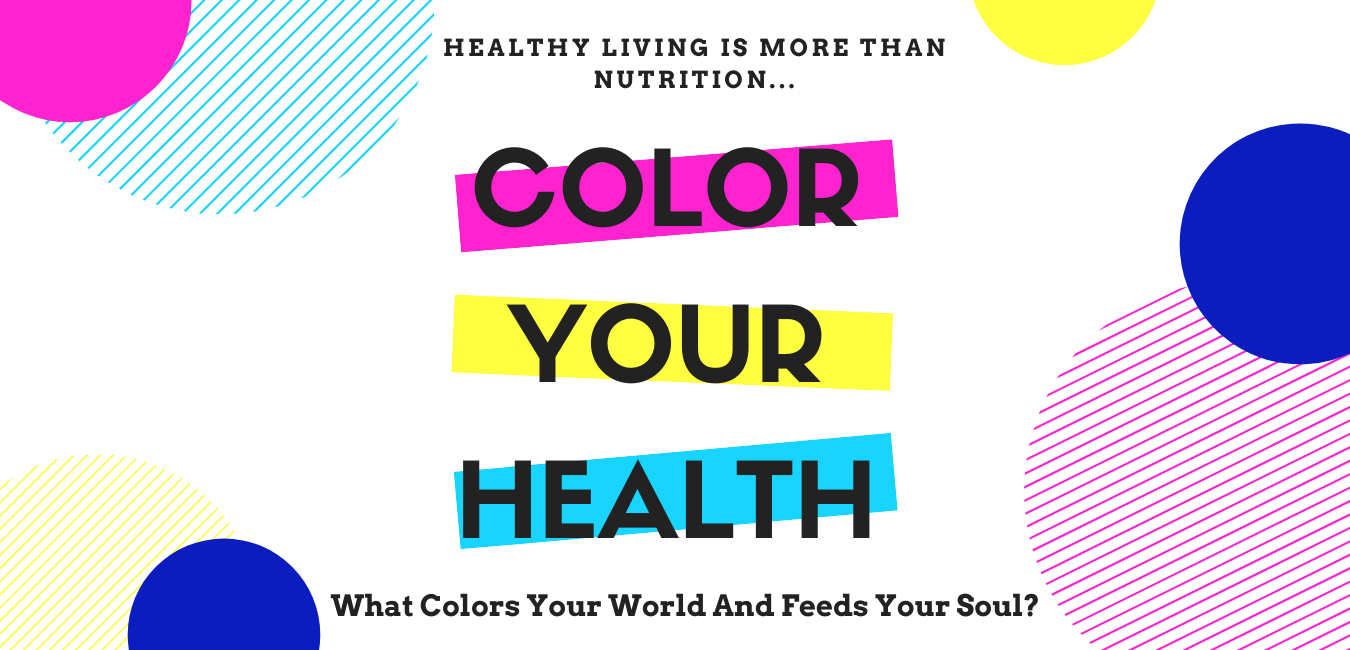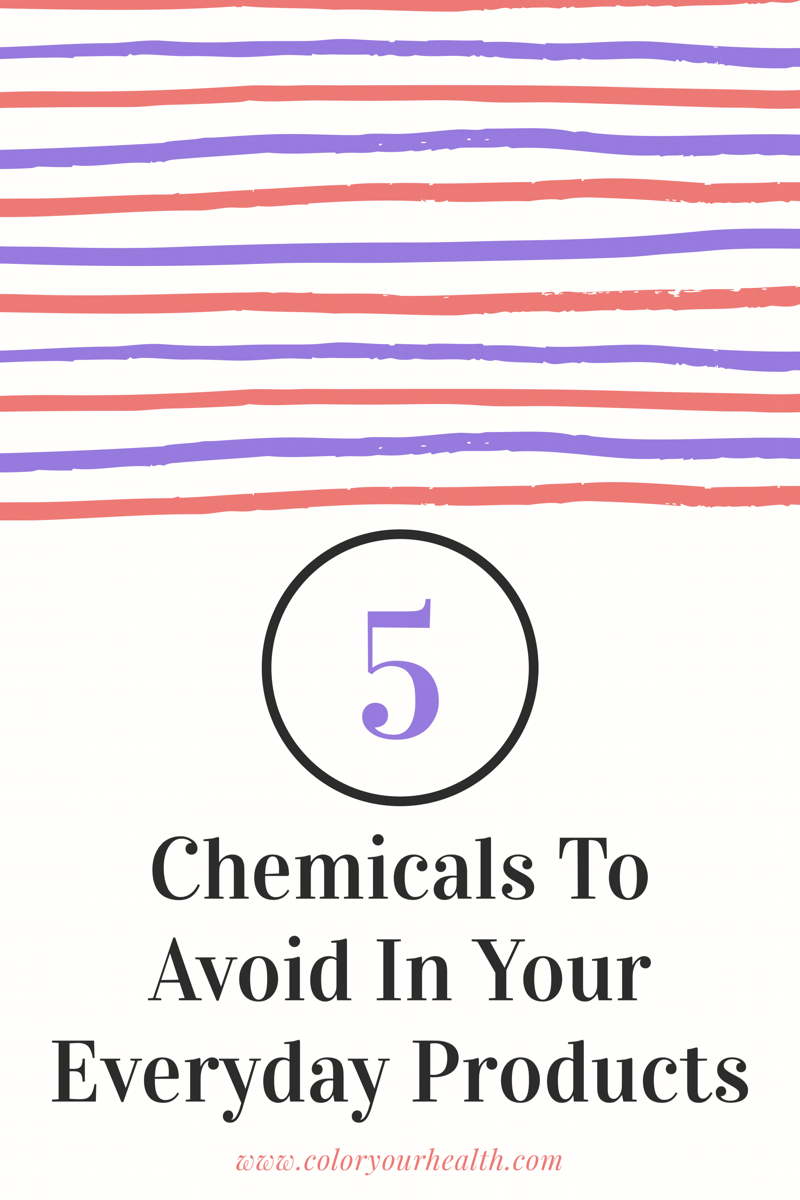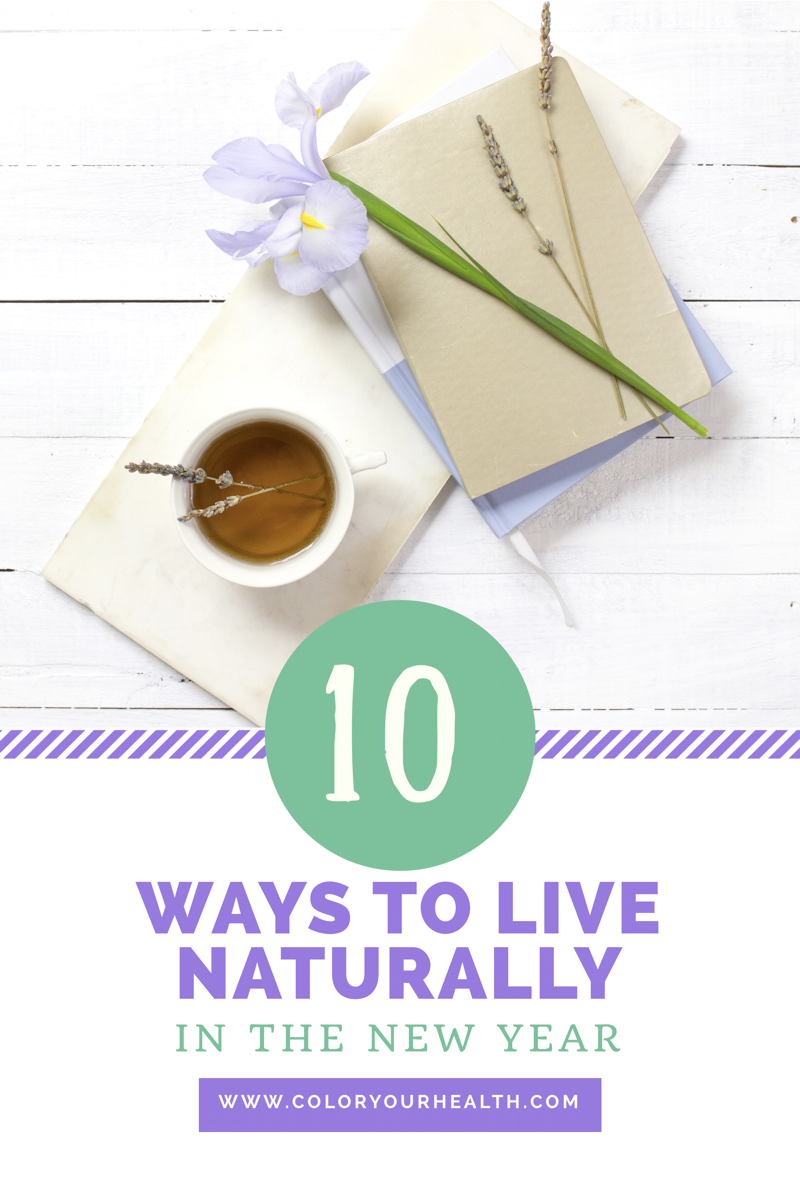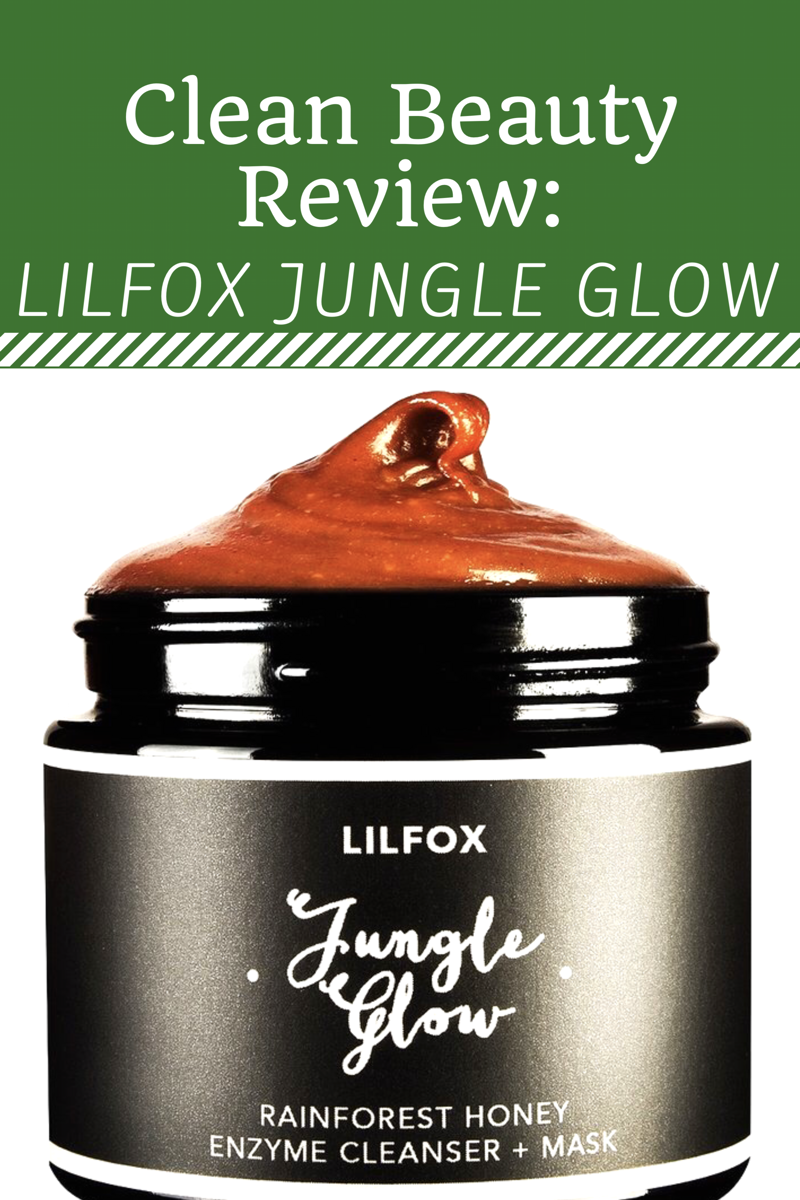Just Say No: 5 Chemical Ingredients To Avoid In Your Everyday Products
Have you ever truly looked at and thought about the ingredients listed on the bottles of your beauty products, household cleaners and air fresheners? I'm talking, really looked at and understood those ingredients. Well my friends, if your answer is no I will tell you that you are with the majority on that one. As vigilant as we are about what we put in our bodies via food and drink, we should also be more aware about what we are putting on our bodies in the form of personal care and beauty products. If you ask me, this is a learning process and takes some time before you actually are understanding good vs. bad ingredients, effects of those harmful ingredients, and actually take the biggest step- replacing those bad for you products. I will not sugar coat this, speaking from a convenience standpoint it is not an easy process to get started, but like most things, once you take the first step things get easier and easier.
Here I have rounded up a list of ingredients to steer clear of and the logic behind the recommendations. When I first started looking at lists like these I remember my head spinning and trying to figure it all out. So I have decided to make today's post two parts for the sake of your brain, you're welcome. One of the best resources I have found and consult often is the Environmental Working Group and their Skin Deep database. You can find all of the information I provide here along with much more by going to ewg.org. In total I have narrowed down the list of toxic ingredients to ten and today we will talk about five. But of course there are many others that could go on this list. Baby steps friends!
Parabens
What They Are:
Parabens are chemicals added to products, especially cosmetics and personal care products, to act as a preservative and extend the shelf life.
Specific Names:
Ingredients to look for would be methylparaben, propylparaben, butylparaben, ethylparaben and similar names typically ending in - paraben
The Bad Stuff:
Studies done on animals and on human tissue in the lab have shown that parabens can mimic estrogen which can then alter the bodies normal hormone balance and functions(Oishi 2001; Pugazhendhi 2007). Parabens have also been detected in breast tumors of patients with breast cancer (Darbre 2004). In addition, parabens may interfere with normal reproductive functions of the body (Oishi 2001, 2002).
Further Reading:
Information obtained from the article Teen Girls' Body Burden Of Hormone- Altering Cosmetics Chemicals: Cosmetics Chemicals of Concern which you can find on the website www.ewg.org and can be read directly by clicking here.
Coal Tar Hair Dye
What They Are:
Coal tar byproducts are chemicals found in dark hair dyes that can enter the body through the scalp and hair follicles and through inhalation.
Specific Names:
Watch for any ingredient that mentions being a byproduct of coal tar including aminophenols, diaminobenzenes,and phenylenediamines
The Bad Stuff:
These ingredients have been shown in studies to possibly increase a persons risk for bladder and certain blood cancers (Altekruse 1999; Kelsh 2008; Takkouche 2005). No single study has proven such, however; it is recommended that caution be used when using dark color hair dyes. You should always wear gloves, and leave the dye on no longer than recommended
Further Reading:
Information obtained from the article Hair Dyes which can be found by visiting the American Cancer Society website www.cancer.org and can be read directly by clicking here.
Fragrances
What They Are:
Volatile chemicals that release a scent when exposed to the air. They can be found in almost every common household product.
Specific Names:
With so many chemicals that produce fragrance, including many chemicals that are not even known about or listed on ingredient lists, it is safest to just look for products labeled "Fragrance Free" or buy products that have all natural ingredients for fragrance.
The Bad Stuff:
The chemicals used in such fragrances are not well regulated and in many cases, not even disclosed. Many of these fragrance chemicals can be skin or inhalant irritants causing allergic reaction and triggering breathing problems and asthmatic episodes. In addition, some chemicals may cause hormone disruption. With this said, fragrance free or natural fragrance is the way to go for all products.
Further Reading:
Information obtained from the article Not So Sexy which you can find on the website www.ewg.org and can be read directly by clicking here.
Phthalates
What They Are:
Phthalates are plasticizers found in numerous products including vinyl flooring, food packaging, plastic containers, and household cleaning products. In the beauty and cosmetics industry they can be found in shampoos, body washes, hairspray, cosmetics and fragrances.
Specific Names To Look For:
Watch for any ingredient that ends with the term phthalate. For example benzyl butyl phthalate and dibutyl phthalate. These ingredients can also go by the abbreviations of BBP and DnBP in reference to the above full name example.
The Bad Stuff:
Among other health issues, pthalates have been linked to, although not proven to cause thyroid issues (Huang 2007) (Meeker 2007), endocrine disruption (Stahlhut 2007), and can interfere with the reproductive system (Duty 2005).
Further Reading:
Information obtained from the following sources:
Teen Girls' Body Burden of Hormone-Altering Cosmetics Chemicals: Cosmetics Chemicals of Concern which you can find on the website www.ewg.org and can be read directly by clicking here.
Triclosan and Triclocarban
What They Are:
These are ingredients added to products to prevent bacterial growth. The most common product containing this ingredient are the popular antibacterial hand soaps
Specific Names to Look For:
Triclosan and Triclocarban
The Bad Stuff:
These chemicals have been linked to a decrease in thyroid function (Veldhoen 2006) and reproductive hormones (Matsumura 2005) (Ishibashi 2004). It has not been proven, but suspected that they may also increase the likelihood of bacterial resistance (Tan 2002). The FDA recently came out with a ruling and statement urging caution of using products containing Triclosan and Triclocarban and encouraged washing hands with soap and water alone as opposed to antibacterial soaps.
Further Reading:
Information obtained from the articles:
Antibacterial Soap? You Can Skip It-- Use Plain Soap And Waterwhich you can find by going to the website www.fda.gov and can be read directly by clicking here.
Teen Girls' Body Burden of Hormone-Altering Cosmetics Chemicals: Cosmetics Chemicals of Concern which you can find by going to the website www.ewg.org and can read directly by clicking here.
Congratulations! If you are still with me, you have made it through five ingredients that are no good for you and you are beginning to understand the reasons why. The world as a whole is just now beginning to understand these ingredients and their effects and more information and research will begin to reveal more regarding why these products are bad for you. And I am sure that with time, these products will become more regulated. For now we know enough that we should try to avoid these ingredients when possible. Some convenient apps and websites that I have found that help me decide if something is safe to by are the following:
Think Dirty App- Provocative name, right? This is an app for your phone that you can look up or scan products directly and it will rate those products based on the ingredients that they contain. The scale is based on a score of 0-10 with 0 being the best and 10 being the worst. Another way to look at it would be that 0 does not contain any harmful or questionable ingredients while a score of 10 contains harmful ingredients and a five would be questionable ingredients. The app will also suggest similar products to what you are looking for that are better for you. Convenient and easy to use, useful information, great app!
EWG Skin Deep Database- This is a website mentioned earlier that is similar to the Think Dirty app. It contains a database of beauty and personal care products and those products are rated based on the ingredients they contain.
Credo Beauty- Envision a Sephora filled with natural, safe for you products, and there you have Credo. The thing I love about this website is it adds back the convenience that I stated earlier was one of the hardest things to give up when you start cutting out toxic products. This website does the research on products for you and only recommends products they feel are natural and non toxic. All ingredients are also listed on the product page that way you can also do your own research if you are questioning the ingredients in a certain product. I love that there are so many makeup choices as well on this website. You would be surprised at the number of chemicals in your standard beauty counter makeup!
Specific Research Articles Sited:
Altekruse SF, Henley SJ, Thun MJ. 1999. Deaths from hematopoietic and other cancers in relation to permanent hair dye use in a large prospective cohort study. Cancer causes control. 10:617-625
Darbre PD, Aljarrah A, Miller WR, Coldham NG, Sauer MJ, Pope GS. 2004. Concentrations of parabens in human breast tumours. J Appl Toxic 24(1): 5-13
Duty SM, Calafat AM, Silva MJ, Ryan L, Hauser R. 2005. Phthalate exposure and reproductive hormones in adult men. Human reproduction (Oxford, England) 20(3):604-610.
Huang PC, Kuo PL, Guo YL, Liao PC, Lee CC. 2007. Associations between urinary phthalate monsters and thyroid hormones in pregnant women. Human reproduction (oxford,England) 22(10):2715-2722.
Ishibashi H, Matsumura N, Hirano M, Matsuoka M, Shiratsuchi H, Ishibashi Y, et al. 2004. Effects of triclosan on the early life stages and reproduction of medals Oryzias latices and induction of hepatic vitellogenin. Aquatic toxicology (Amsterdam, Netherlands) 67(2):167-179.
Kelsh MA, Alexander DD, Kalmes RM, Buffler PA. 2008. Personal use of hair dyes and risk of bladder cancer: A meta-analysis of epidemiological data. Cancer causes control. 19:549-558
Matsumura N, Ishibashi H, Hirano M, Nagao Y, Watanabe N, Shiratsuchi H, et. al. 2005. Effects of nonylphenol and triclosan on production of plasma vitellogenin and testosterone in male South African clawed frogs (Xenopus laevis). Biological & pharmaceutical bulletin 28(9):1748-1751.
Meeker JD, Calafat AM, Hauser R. 2007. Di-(2-ethylhexyl) phthalate metabolites may alter thyroid hormone levels in men. Environmental health perspectives in press.
Oishi S. 2001. Effects of butylparaben on the male reproductive system in rates. Toxicology and industrial health. 17(1):31-39
Oishi S. 2002. Effects of butyl paraben on the male reproductive system in mice. Archives of toxicology 76(7):423-429
Pugazhendhi D, Sadler AJ, Darbre PD. 2007. Comparison of the global gene expression profiles produced by methylparaben, n-butylparaben and 17beta-oestradiol in MCF7 human breast cancer cells. J Appl Toxic 27(1):67-77
Stahlhut RW, vanWijngaarden E, Dye TD, Cook S, Swan SH. 2007. Concentrations of urinary phthalate metabolites are associated with increased waist circumference and insulin resistance in adult U.S. males. Environmental health perspectives in press.
Takkouche B, Etminan M, Montes-Martinez A.2005. Personal use of hair dyes and risk of cancer: A meta-analysis. JAMA. 293:2516-2525
Tan L, Nielsen NH, Young DC, Trizna Z. 2002. Use of antimicrobial agents in consumer products. Archives of dermatology 138(8):1082-1086.
Veldhoen N, Skirrow RC, Osachoff H, Wigmore H, Clapson DJ, Gunderson MP, et al. 2006. The bactericidal agent triclosan modulates thyroid hormone-associated gene expression and disrupts postembryonic anuran development. Aquatic toxicology (Amsterdam, Netherlands) 80(3):217-227.




